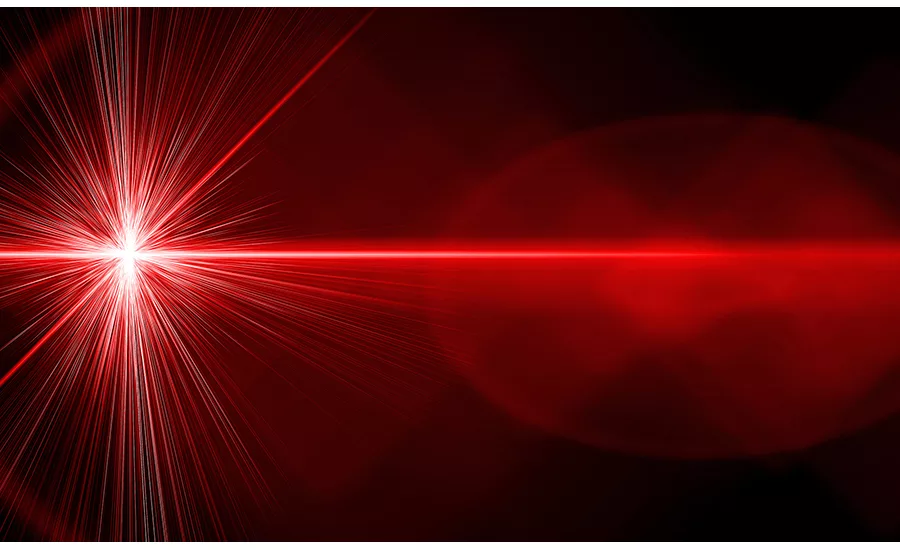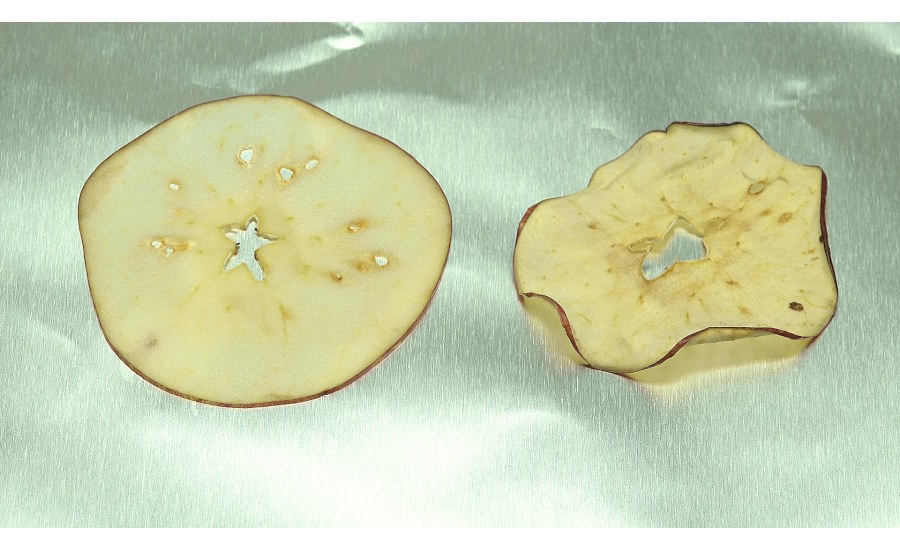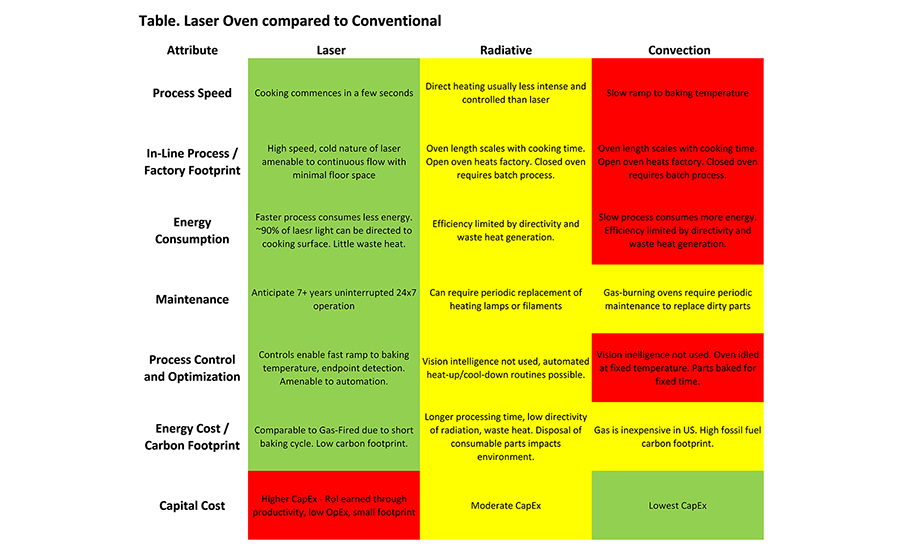Lasers Speed Food Preparation While Slashing Energy Consumption
Food processing industries and applications are able to realize quick and precise food preparation while saving energy by using laser ovens.

Image courtesy of Getty Images / fotojog
High-efficiency laser heating solutions are poised to impact the food processing industry as low carbon footprint alternatives to conventional ovens. Since their recent introduction, laser ovens have quickly gained market share in productivity-focused industries such a Li-ion battery cell manufacturing and drying/curing of industrial coatings such as paint or powder coat. Food processing industries and applications are able to realize similar advantages, namely, lasers can process food quickly with precise control, while saving energy.
Understanding the potential benefits begins with a demonstration of a laser oven. IPG’s Applications Lab setup consists of a 30 kilowatt laser uniformly illuminating a 130 cm x 30 cm surface beneath a projection head. Notably, the oven requires no insulating walls, because all laser energy is directed onto the processing surface. A close-up of the head reveals an infrared metrology camera just behind.
Diode lasers are the ideal laser type for heating applications because they combine the lowest cost-per-watt with the highest energy conversion efficiency. The infrared radiation, around ~970 nm, provides several benefits compared to convection furnaces. Laser light is highly directable so that only the fixed target area is illuminated. Thus, little energy is wasted heating the surroundings, including the underlying substrate. The intense radiation quickly brings the target to its baking temperature. Infrared cameras monitor the surface temperature, forming a closed loop control with the laser to ensure the process temperature window is never exceeded.
To illustrate these advantages, our setup processed supermarket peanut butter cookie dough. The manufacturer’s recommendation is to place the dough in a pre-heated 350°F oven and bake for 10-12 minutes. In the laser-oven, the target 290°F process temperature is reached after only 20 seconds. The control loop backed off laser power to maintain 290°F for another 70 seconds, allowing the dough to rise and brown as expected. A two-dimensional infrared camera image confirmed the surface temperature of the cookies were uniform during baking. The walls of the laser oven remained below 90°F the entire time. While the speed and energy saving advantages are obvious, we’d be remiss if we didn’t mention that all onlookers were fully satisfied when the cookies were tasted.
The food industry also stands to benefit from laser ovens used for drying, which is currently performed using energy-intensive freeze drying or box oven processes. To gather insight whether similar advantages exist, we prepared 1mm cut slices from fresh supermarket apples. The slices were exposed on one side to 1.5 W/cm2 laser radiation heating them to an optimal 290°F drying temperature for a total of 10 minutes, after which time their taste and pithy texture was indistinguishable from the dried apple rings many of us snack on between meals. No doubt, had our laser oven been configured for dual-sided illumination, we would have achieved an even more impressive drying speed benchmark.
 Laser-dried apple slices were prepared from fresh cut apples by gently heating to 290°F for 10 minutes. Click here for video. Image courtesy of IPG Photonics
Laser-dried apple slices were prepared from fresh cut apples by gently heating to 290°F for 10 minutes. Click here for video. Image courtesy of IPG Photonics
A primary advantage provided by a laser oven comes from shortening the time to reach process temperature. Table 1 tabulates further aspects of laser ovens which directly contribute to lower operating costs and lessened environmental impact. A laser oven consumes energy only when processing items. There is no preheating or idling between batches since the laser is able to turn on at full strength in milliseconds while switching off instantly like a light switch. No energy is wasted heating oven walls or the atmosphere inside the enclosure as with traditional ovens, or for that matter the factory floor. Other key benefits are generally less factory floor space is needed for a higher speed laser process, and that laser components are highly reliable: seven years of maintenance-free, 24/7 operation is expected.

Like other radiative heating processes, lasers are well-suited for surface heating. Since the laser energy is projected, not focused, heating is insensitive to surface topology, provided a line-of-sight exists. For the same reason, eye safety requirements are less stringent than for focused laser solutions widely deployed by metalworking industries. Flammability is not an issue given the low (<10W/cm2) fluences employed for baking and drying.
For lasers to contribute to the food industry journey toward high-efficiency, electrification and sustainability, more aspects of the process must be understood to ensure valuable food attributes such as nutrition, taste and texture are not affected.
Still, it is already clear that laser ovens can process food with reasonable quality in a fraction of time required by a convection oven. The tantalizing prospects of higher productivity and reduced energy consumption will no doubt motivate many more food engineers and industry executives to explore incorporating laser heating into food making processes. We are looking forward to many more delicious laser-heating demonstrations.
Looking for a reprint of this article?
From high-res PDFs to custom plaques, order your copy today!
















